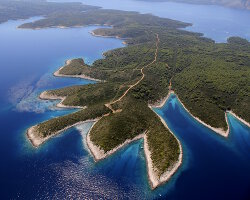Sealife guideThe spotted spiny lobsterPanulirus guttatus
Last updated on 03/06/2025 at 10:36 PM
Taxonomy
- Common name: Spotted spiny lobster, Guinea lobster
- French name: Langouste Brésilienne, langouste mouchetée, appelée Homard bissié ou Brésilien en Martinique
- Scientific name: Panulirus guttatus (Latreille, 1804)
- Family name: Panuliridae
- Order name: Decapoda
- Class name: The crustaceans [Malacostraca]
Description
The spotted spiny lobster measures around 15 centimetres, but the largest can measure up to 20 centimetres in length. The shell of the spotted spiny lobster is dotted with white spots. Spotted spiny lobsters can be green, blue or brown.

The spotted spiny lobster shelters in coral reef crevices !
Geographic range
The spotted spiny lobster is found in the tropical waters of the western Atlantic Ocean, from
Florida in the north to the Brazilian coast in the south. The spotted spiny lobster is found in the waters of the Caribbean Sea, in the Bahamas and in the coral reefs that line the many islands of the West Indies, such as
Guadeloupe, …
Habitat
The spotted spiny lobster lives in the crevices of coral reefs or holes between rocks. They can be found at depths of up to twenty meters.
Diet
The spotted spiny lobster hunts at night and feeds on both live and dead animals such as sea urchins,
crustaceans, shellfish and
mollusks.
Reproduction
The spotted spiny lobster reaches sexual maturity at around 2 to 3 years of age. Water temperature and ambient light can influence the reproductive period of the spotted spiny lobster, but generally speaking it takes place during spring and summer. After fertilization, the female carries her eggs under her abdomen until they hatch.
Did you know ?
The spotted spiny lobster can be distinguished from the
Caribbean spiny lobster by the characteristic white spots that dot its body and legs !
The fishing and sale of Brazilian lobsters smaller than 14 centimetres is prohibited. During the breeding season, females carrying eggs are not allowed to be fished or sold, whatever their size or time of year.
Please note that local regulations may restrict the fishing season, particularly in Martinique, so be sure to ask ! And for the record, catching lobster, like any other animal species, is forbidden when scuba diving !
The spotted spiny lobster is listed as many other marine species within The
IUCN Red List of threatened species. The spotted spiny lobster appears in the
IUCN Red List since 2011 within the category Least Concern !
Tips for observing
The spotted spiny lobster hides alone or in groups in rocky crevices or under rocky overhangs, so all you have to do is to look carefully at coral reefs to spot them with your dive light: their antennae are a clue to their presence !

The spotted spiny lobster can be distinguished from the royal lobster by its characteristic white spots !
Within the same genus
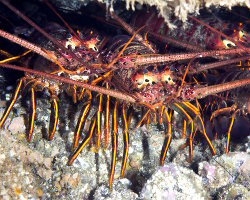
California spiny lobster
(Panulirus interruptus)
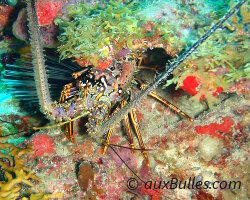
Caribbean spiny lobster
(Panulirus argus)

Japanese crayfish
(Panulirus japonicus)
Within the same family
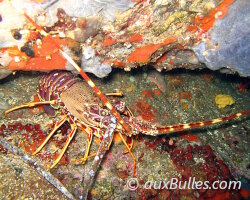
European spiny lobster
(Palinurus elephas)
Discover also

Atlantic ghost crab
(Ocypode quadrata)

Atlantic horseshoe crab
(Limulus polyphemus)
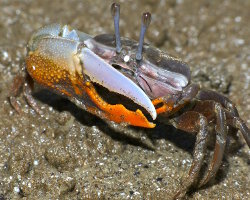
Calling fiddler crab
(Uca vocans)

Common prawn
(Palaemon serratus)

Ghost crab
(Ocypode gaudichaudii)
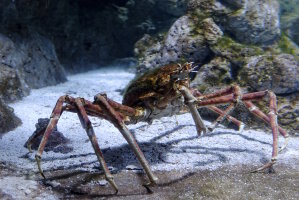
Giant spider crab
(Macrocheira kaempferi)

Hairy yellow hermit crab
(Aniculus maximus)
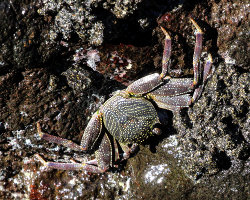
Weak shelled rock crab
(Grapsus tenuicrustatus)
The marine species from Caribbean sea
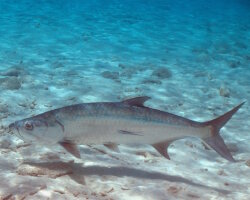
Atlantic tarpon
(Megalops atlanticus)
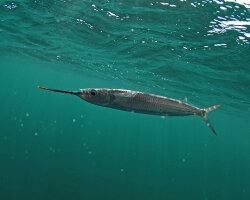
Ballyhoo
(Hemiramphus brasiliensis)
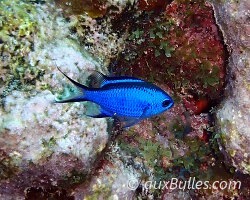
Blue chromis
(Azurina cyanea)
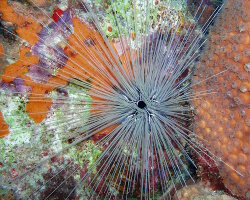
Long-spined sea urchin
(Diadema antillarum)
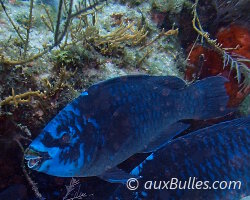
Midnight parrotfish
(Scarus coelestinus)
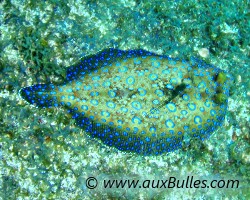
Peacock flounder
(Bothus lunatus)
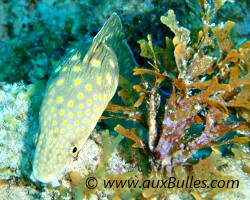
Sharptail eel
(Myrichthys breviceps)

Spotfin butterflyfish
(Chaetodon ocellatus)
Dive centers

'Les Ilets' dive center
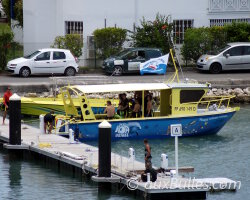
Noa dive center


























